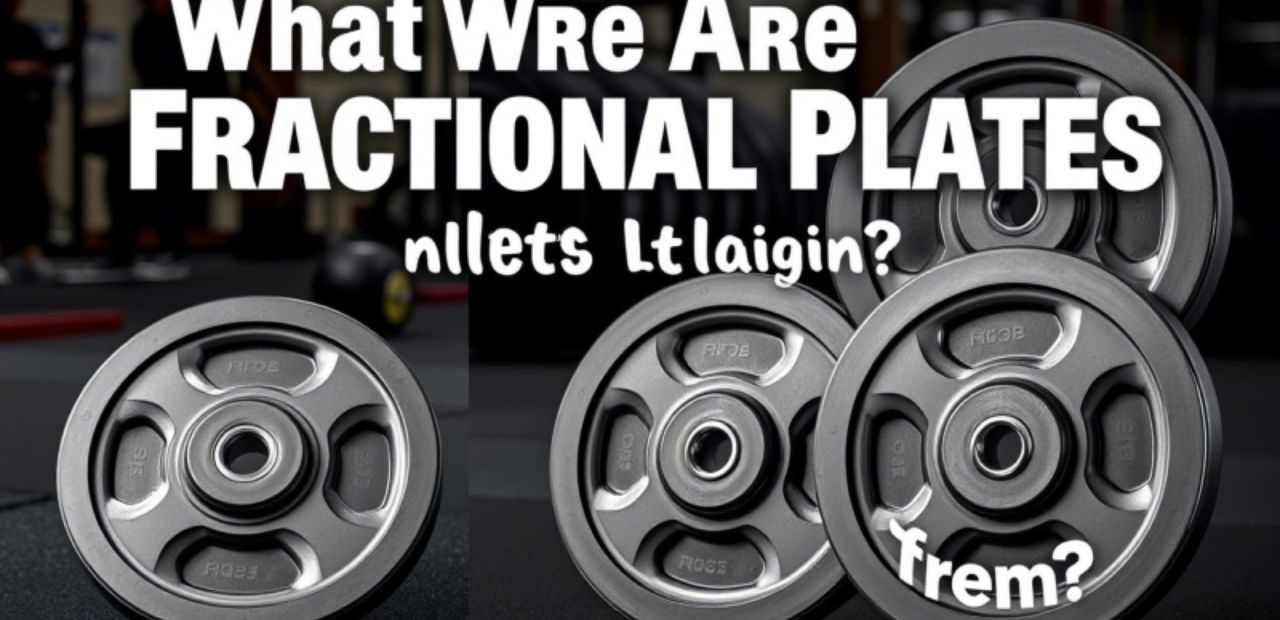Introduction
In the world of weightlifting and fitness, achieving strength and muscle growth is all about progression. One of the most effective ways to break through plateaus and increase lifting capacity is by using fractional plates. If you’re not familiar with them yet, fractional plates are small weight increments that allow you to gradually increase the load in your workouts. In this article, we’ll explore what fractional plates are, how they work, and why they should be a staple in your training routine.
What Are Fractional Plates?
Fractional plates are weight plates that are designed to provide small weight increments, typically ranging from 0.5 kg (1 lb) to 2.5 kg (5.5 lbs). These plates can be used in addition to the regular plates on your barbell, offering precise weight adjustments. They are especially useful for individuals looking to make incremental gains without risking injury or overtraining.
Unlike traditional weight plates, which usually come in increments of 2.5 kg (5 lbs) or more, fractional plates allow lifters to make smaller adjustments, making them ideal for people training for strength, powerlifting, or Olympic lifting.
Why Should You Use Fractional Plates?
1. Achieve More Precise Progression
One of the biggest advantages of fractional plates is the ability to make precise adjustments to your lifting load. For example, instead of jumping from 50 kg to 55 kg in your deadlift or squat, you can make smaller increments such as 52.5 kg or even 51.25 kg. This subtle increase ensures you’re progressively overloading your muscles, which is key to building strength and avoiding plateaus.
. Avoid Injury
When you’re trying to push yourself to lift heavier, jumping straight to a larger weight increment can lead to poor form, reduced performance, or even injury. Fractional plates allow you to make smaller, more controlled increases, giving your body the time it needs to adapt to the new load. This can help reduce the risk of strain on your joints and muscles.
Overcome Plateaus
Lifting heavier weights is not just about the number on the barbell — it’s about progressive overload. For many lifters, especially those who have been training for a while, it’s easy to hit a plateau. Using fractional plates allows you to break through those barriers by making smaller yet effective weight changes. This is particularly beneficial for advanced lifters who need incremental jumps to continue progressing.
Enhance Technique and Form
Lifting too much weight too soon can negatively impact your form and technique. By using fractional plates, you can focus on improving your technique with lighter weights while still pushing your limits with gradual increases. This helps ensure you maintain good form and avoid injuries.
. Suitable for All Fitness Levels
Fractional plates aren’t just for seasoned lifters. Beginners can benefit from these small increments as well. As you start out in strength training, making gradual increases with fractional plates can help you build confidence, skill, and strength without overloading the body too soon.
How Do Fractional Plates Work?
Fractional plates work by adding small increments of weight to your existing barbell setup. Here’s how you can use them effectively:
- Determine Your Current Strength Level: Assess the weights you are currently lifting to identify where you can start incorporating fractional plates.
- Start Small: Begin with the lightest fractional plate to get a feel for how it affects your lifting performance.
- Gradual Increases: Add fractional plates over time. You can start with a 0.5 kg plate and work your way up to larger increments as you progress.
- Focus on Consistency: Progress slowly but consistently. Use fractional plates to add 1-2 small increases each week or workout session, depending on your training goals.
How To Incorporate Fractional Plates into Your Workout Routine
To get the most out of your fractional plates, incorporate them into your training program with these tips:
- In Strength Training: If you’re a powerlifter or doing heavy compound lifts, use fractional plates to make small but progressive weight increases.
- For Endurance and Hypertrophy: Use smaller increments when performing higher-repetition sets, so you can continue to challenge your muscles without jumping to larger, more taxing weights.
- Olympic Lifting: Olympic weightlifters benefit from fractional plates, especially when performing high-skill lifts like the clean and jerk or snatch. These movements require perfect technique and gradual weight increases to avoid injury.
Types of Fractional Plates
Fractional plates come in different designs and materials. Some of the most common types include:
- Metal Plates: These are the traditional type of fractional plates and are typically made of steel or cast iron. They are durable and reliable for most lifters.
- Rubber-Coated Plates: Rubber-coated fractional plates are often used in commercial gyms because they are quieter and less likely to cause damage to the floor when dropped.
- Competition-Grade Plates: These plates are used in professional settings and adhere to specific weight standards.
Conclusion
Fractional plates are an essential tool for anyone serious about strength training, whether you’re a beginner, intermediate, or advanced lifter. They provide a method to gradually increase weight, avoid plateaus, improve technique, and prevent injury. If you’re looking to take your lifting to the next level, incorporating fractional plates into your routine is an excellent strategy for progressive overload and achieving long-term success.
By utilizing fractional plates, you can achieve steady gains, improve your technique, and enjoy a safer, more effective lifting experience. Ready to get started? Start small, be consistent, and watch your strength soar!

Emily Rose Johnson is a passionate writer with a knack for crafting engaging content. She specializes in communication strategies, digital marketing, and creative storytelling.









